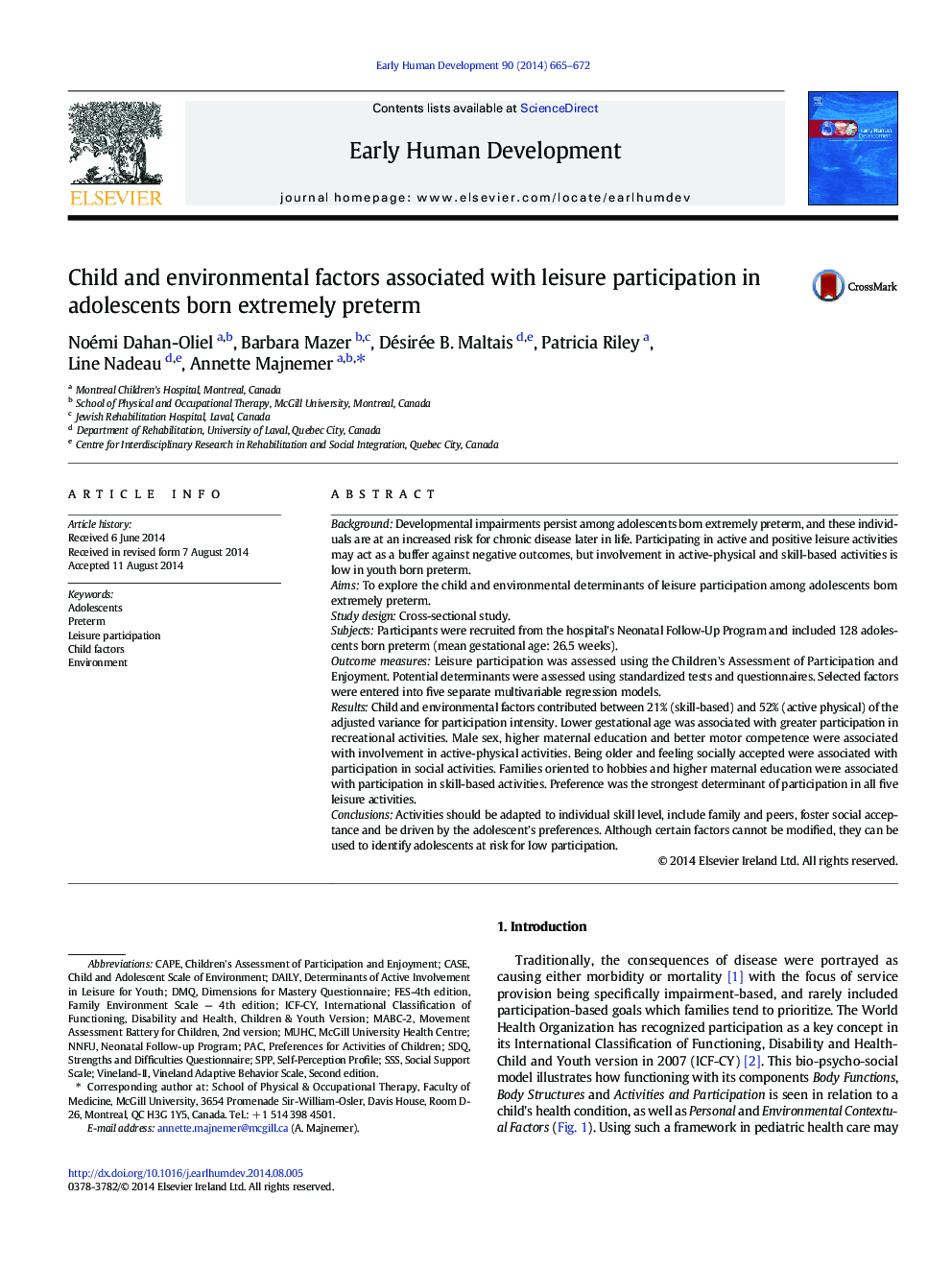| کد مقاله | کد نشریه | سال انتشار | مقاله انگلیسی | نسخه تمام متن |
|---|---|---|---|---|
| 3916647 | 1252062 | 2014 | 8 صفحه PDF | دانلود رایگان |
• Promoting participation must consider activities the adolescent prefers.
• Poor motor competence is associated with lower participation in active-physical activities.
• Activities should be adapted to individual skill level and include family and peers.
• Certain factors cannot be modified but they can identify youth at risk for low participation.
BackgroundDevelopmental impairments persist among adolescents born extremely preterm, and these individuals are at an increased risk for chronic disease later in life. Participating in active and positive leisure activities may act as a buffer against negative outcomes, but involvement in active-physical and skill-based activities is low in youth born preterm.AimsTo explore the child and environmental determinants of leisure participation among adolescents born extremely preterm.Study designCross-sectional study.SubjectsParticipants were recruited from the hospital's Neonatal Follow-Up Program and included 128 adolescents born preterm (mean gestational age: 26.5 weeks).Outcome measuresLeisure participation was assessed using the Children's Assessment of Participation and Enjoyment. Potential determinants were assessed using standardized tests and questionnaires. Selected factors were entered into five separate multivariable regression models.ResultsChild and environmental factors contributed between 21% (skill-based) and 52% (active physical) of the adjusted variance for participation intensity. Lower gestational age was associated with greater participation in recreational activities. Male sex, higher maternal education and better motor competence were associated with involvement in active-physical activities. Being older and feeling socially accepted were associated with participation in social activities. Families oriented to hobbies and higher maternal education were associated with participation in skill-based activities. Preference was the strongest determinant of participation in all five leisure activities.ConclusionsActivities should be adapted to individual skill level, include family and peers, foster social acceptance and be driven by the adolescent's preferences. Although certain factors cannot be modified, they can be used to identify adolescents at risk for low participation.
Journal: Early Human Development - Volume 90, Issue 10, October 2014, Pages 665–672
